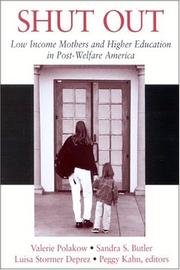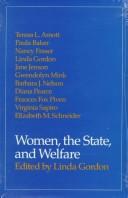| Listing 1 - 10 of 67 | << page >> |
Sort by
|
Book
ISBN: 9782706115998 2706115998 Year: 2010 Publisher: Grenoble: Presses universitaires de Grenoble,
Abstract | Keywords | Export | Availability | Bookmark
 Loading...
Loading...Choose an application
- Reference Manager
- EndNote
- RefWorks (Direct export to RefWorks)
Physicians, Women --- Specialties, Surgical --- Feminization
Book
ISBN: 2735118304 2735111466 Year: 2007 Publisher: Paris Éditions de la Maison des sciences de l’homme
Abstract | Keywords | Export | Availability | Bookmark
 Loading...
Loading...Choose an application
- Reference Manager
- EndNote
- RefWorks (Direct export to RefWorks)
L’accès des femmes aux pleins pouvoirs de police est récent. Depuis une trentaine d’années, les policiers de sexe féminin suivent la même formation, sont dotés des mêmes habilitations judiciaires et du même armement que les hommes. S’agit-il d’un changement profond dans la conception de l’ordre public ? Ont-elles accès aux mêmes services et aux mêmes missions ? Comment s’intègrent-elles à la sociabilité virile des commissariats ? Telles sont quelques-unes des questions auxquelles Geneviève Pruvost répond dans cet ouvrage pionnier qui constitue la première recherche française d’ampleur sur la féminisation de la police. L’étude fouillée - qualitative et quantitative - permet de suivre et de comprendre les trajectoires des « femmes policiers », de la fabrique familiale de la vocation à la gestion de la carrière, de la scolarité aux coulisses du métier, du travail sur la voie publique aux arrangements avec le conjoint, de l’accomplissement des tâches nobles au « sale boulot ». Elle montre comment, en adoptant les codes virils en vigueur, ces femmes tentent d’échapper aux stéréotypes de fragilité et d’indisponibilité qui leur sont encore trop souvent accolés. Ce livre met ainsi l’accent sur les arrangements, les processus d’« asexuation » et les possibles neutralisations d’un espace fortement sexualisé, tout en pointant les discriminations et les contraintes fortes qui entravent la progression des femmes dans la profession. Geneviève Pruvost cerne, au plus près et avec subtilité, la diversité des interactions entre hommes et femmes dans la police nationale. À l’originalité d’une démarche attentive à la mobilité de genre, s’ajoute celle d’une approche compréhensive des principes fondateurs de l’institution policière.
Social sciences --- Police --- Feminization --- Gender studies, gender groups

ISBN: 0880993197 9781417596341 1417596341 9781417596348 9780880993180 0880993189 9780880993197 Year: 2005 Publisher: Kalamazoo, Mich. W.E. Upjohn Institute for Employment Research
Abstract | Keywords | Export | Availability | Bookmark
 Loading...
Loading...Choose an application
- Reference Manager
- EndNote
- RefWorks (Direct export to RefWorks)
BUSINESS & ECONOMICS --- Economic History --- Public welfare --- Welfare recipients --- Poor women --- Employment --- United States --- Social policy --- Feminization of poverty --- Women, Poor --- Poor --- Women --- Economic conditions
Book
ISBN: 2111399124 Year: 2014 Publisher: Paris : Département des études, de la prospective et des statistiques,
Abstract | Keywords | Export | Availability | Bookmark
 Loading...
Loading...Choose an application
- Reference Manager
- EndNote
- RefWorks (Direct export to RefWorks)
Le ministère de la Culture et de la Communication français et le National Endowment of the Arts aux États-Unis réalisent régulièrement une enquête nationale (Pratiques culturelles des Français et Public Participation for the Arts) pour suivre l’évolution des comportements des habitants dans le domaine de la culture et des médias. La confrontation des résultats de ces deux enquêtes, dont les éditions sont, depuis le début des années 1980, relativement proches dans le temps, permet une analyse comparative sur près de trois décennies du niveau de diffusion des pratiques culturelles et du profil de leurs publics respectifs. Au début des années 1980, la population américaine, bien que plus téléphage, avait un niveau général de participation culturelle supérieur, à l’exception de la lecture de livres. Le profil des publics culturels en termes de sexe, d’âge, de niveau d’études et de revenu était relativement proche de part et d’autre de l’Atlantique. Les évolutions observées dans chaque pays au cours des décennies suivantes sont souvent semblables mais interviennent plus tard en France (augmentation de la consommation de télévision, baisse de la lecture de livres, progression des pratiques artistiques en amateur). La seule véritable divergence concerne les sorties au cinéma, au théâtre et aux spectacles de danse, dont les taux de fréquentation ont progressé en France dans les années 2000, au moment où ils accusaient un recul marqué aux États-Unis. Les évolutions relatives au profil des publics sont également souvent analogues : féminisation et vieillissement des publics, recul de la participation des plus diplômés s’observent dans les deux pays, avec toutefois une accentuation des écarts entre les plus riches et les plus pauvres aux États-Unis qu’on n’observe pas en France. The French Ministry of Culture and Communication and the US National Endowment of the Arts regularly conduct national surveys (Pratiques culturelles des Français and Public Participation for the…
Sociology --- Cultural studies --- pratiques culturelles --- analyse comparative --- féminisation --- France --- vieillissement des publics --- Etats-Unis --- télévision --- livre --- cinéma --- théâtre --- ageing audiences --- comparative analysis --- cultural participation --- feminization
Book
ISBN: 2111399132 Year: 2014 Publisher: Paris : Département des études, de la prospective et des statistiques,
Abstract | Keywords | Export | Availability | Bookmark
 Loading...
Loading...Choose an application
- Reference Manager
- EndNote
- RefWorks (Direct export to RefWorks)
A comparison of the results of these two surveys, which have been published in roughly similar periods since the early 1980s, gives a comparative study of the level of dissemination of cultural practices and their respective public profiles which spans almost three decades. In the early 1980s, the American population, whilst being much more avid consumers of television, had a higher overall level of cultural participation, except in the area of book reading. The profile of cultural consumers in terms of age, sex, level of education and income was fairly similar on both sides of the Atlantic. The changes observed in each country over the course of the following decades are often similar, although they occur later in France (e.g. increasing consumption of television, decreasing book readership, increasing amateur artistic practices). The only main disparity concerns outings to the cinema, theatre and dance performances, for which attendance figures rose in France during the 2000s, at a time when they were showing a marked decline in the USA. Relative changes in the profile of cultural consumers are often similar: we observe an increasingly female and an increasingly older public, whilst reduced participation on the part of the highest-educated has also been seen in both countries, although with a marked disparity between the richest and poorest in the USA which is not seen in France. The French Ministry of Culture and Communication and the US National Endowment of the Arts regularly conduct national surveys (Pratiques culturelles des Français and Public Participation for the Arts) to track changing behaviour in the general population in the fields of culture and media. Le ministère de la Culture et de la Communication français et le National Endowment of the Arts aux États-Unis réalisent régulièrement une enquête nationale (Pratiques culturelles des Français et Public Participation for the Artspour suivre l’évolution des comportements des habitants dans le domaine…
Sociology --- Cultural studies --- analyse comparative --- féminisation --- pratiques culturelles --- vieillissement des publics --- cinéma --- Etats-Unis --- France --- théâtre --- télévision --- livre --- cultural participation --- feminization --- ageing audiences --- comparative analysis
Book
ISBN: 2111398187 Year: 2014 Publisher: Paris : Département des études, de la prospective et des statistiques,
Abstract | Keywords | Export | Availability | Bookmark
 Loading...
Loading...Choose an application
- Reference Manager
- EndNote
- RefWorks (Direct export to RefWorks)
En 2011, les femmes représentent 29 % des auteurs de la SACD et reçoivent 24 % des droits versés. Une femme perçoit ainsi, en 2011, un revenu moyen inférieur de 24 % à celui d’un homme. Les écarts de droits versés entre femmes et hommes trouvent plusieurs éléments d’explication : les femmes participent à moins d’œuvres que les hommes, en particulier dans le cinéma, le théâtre et les arts de la rue. Elles n’exercent pas non plus les mêmes fonctions, et sont ainsi plus souvent auteurs de texte ou chorégraphes que réalisatrices ou compositrices. À discipline et fonction égales, les écarts de rémunération sont pratiquement inexistants dans la radio et la télévision, mais subsistent dans le cinéma et le spectacle vivant : ces écarts persistants peuvent être liés à d’autres facteurs comme, par exemple, une fréquentation des spectacles ou une programmation des œuvres moins importante, dans des lieux de représentation ou sur des canaux de diffusion différents et à des horaires moins favorables. In 2011, women represented 29% of SACD authors and received 24% of the royalties paid. As a result, in 2011, a woman received an average income 24% less than that for a man. The differences in royalties between men and women can be explained in several ways: women participate in fewer works than men, in particular in the cinema, theatre and street arts. Neither do they perform the same functions, and so are more often text authors or choreographers than directors or composers. For the same discipline and function the differences in remuneration are practically non-existent in radio and television, but live on in cinema and live shows: these persistent differences can be linked to other factors, such as, for example, lower audience numbers or programming of works, in different performance venues or on different distribution channels and at less favourable times.
Arts & Humanities --- Business --- emploi culturel --- féminisation --- spectacle --- SACD --- INSEE --- inégalités --- cultural employment --- feminization --- INSEE (National Institute of statistics and economic studies) --- performing art
Book
ISBN: 2111398500 Year: 2014 Publisher: Paris : Département des études, de la prospective et des statistiques,
Abstract | Keywords | Export | Availability | Bookmark
 Loading...
Loading...Choose an application
- Reference Manager
- EndNote
- RefWorks (Direct export to RefWorks)
Le salariat représente les trois quarts de l’emploi total dans le secteur culturel. Il est très singulier par rapport à l’ensemble de l’emploi salarié en France : les salariés qui interviennent dans le secteur culturel ont souvent plusieurs employeurs (y compris des employeurs à l’extérieur du champ culturel), exercent plusieurs métiers, travaillent globalement moins longtemps que les autres tout en cumulant des contrats de différents types. Il est également très diversifié, les salariés intervenant dans l’audiovisuel et le spectacle vivant évoluant dans des situations bien distinctes de celles des autres salariés du secteur culturel, en termes de temps de travail, de salaires perçus, de types de postes occupés et de professions exercées. Wage-earners make up three quarters of all employees in the culture sector. This is most unusual when compared with the overall wage-earning population in France : wage-earners in the culture sector often have several employers (including employers outside of the cultural sphere), carry out several jobs, work for less time overall than other wageearners whilst concurrently working under different contracts. It is also highly diversified, with wage-earners working in audiovisual and live entertainment following very different career paths to others in the cultural sector, in terms of working hours, salary levels, occupations and job types held.
Sociology --- Cultural studies --- cultural employment --- feminization --- INSEE (National Institute of statistics and economic studies) --- cultural statistics --- cultural wage-earner --- emploi culturel --- salariat culturel --- statistiques culturelles --- féminisation --- INSEE --- typologie

ISBN: 0791484971 1423739671 9781423739678 0791461254 9780791461259 0791461262 9780791461266 9780791484975 Year: 2004 Publisher: Albany : State University of New York Press,
Abstract | Keywords | Export | Availability | Bookmark
 Loading...
Loading...Choose an application
- Reference Manager
- EndNote
- RefWorks (Direct export to RefWorks)
Shut Out portrays in vivid detail the economic, educational, and existential struggles that single mothers confront as they fight back against a welfare-to-work regime that denies them access to higher education and obstructs their aspirations as autonomous women, determined to exit poverty and attain family self-sufficiency. The book is a unique blend of policy analysis and lived realities. The voices of student mothers fighting to stay in school, and organizing for a different future, are embedded in an analysis grounded in the educational experiences of women in poverty across the states. Harsh and punitive public policies that are designed to keep poor women trapped in low wage work are juxtaposed against the actions of those who, together with their allies, have resisted—inspired by a vision of a different world made possible by higher education.Contributing authors discuss the provisions of the 1996 "welfare reform" (PRWORA) Act and the myriad of statewide responses to educational options within the framework of national legislation. In documenting the multiple obstacles and policy restrictions that low income women face, the book also highlights successful state programs, institutional practices, and community-based programs that afford low income women educational opportunities. The afterword summarizes recent legislative developments and makes policy and advocacy recommendations for the future.
Mothers --- Poor women --- Welfare recipients --- Moms --- Parents --- Women --- Housewives --- Motherhood --- Pregnant women --- Feminization of poverty --- Women, Poor --- Poor --- Public welfare recipients --- Education (Higher) --- Economic conditions

ISBN: 1283692252 0299126633 9780299126636 0299126609 9780299126605 0299126641 9780299126643 Year: 1990 Publisher: Madison, Wis. University of Wisconsin Press
Abstract | Keywords | Export | Availability | Bookmark
 Loading...
Loading...Choose an application
- Reference Manager
- EndNote
- RefWorks (Direct export to RefWorks)
A collection of essays about women and welfare in America, this book discusses how welfare programmes affect women and how gender relations have influenced the structure of such programmes. Issues such as race and class are also discussed.
Women --- Feminism --- Poor women --- Public welfare --- Feminization of poverty --- Women, Poor --- Poor --- Political activity --- History. --- Economic conditions --- United States --- Social policy.
Book
ISBN: 1283377020 9786613377029 0857284460 0857287974 Year: 2011 Publisher: London : Anthem Press,
Abstract | Keywords | Export | Availability | Bookmark
 Loading...
Loading...Choose an application
- Reference Manager
- EndNote
- RefWorks (Direct export to RefWorks)
This book focuses on the cultural and gender dimensions of informal survivalism. It provides a fascinating insight into womens use of soap operas to reconfigure suffering, pleasure, sexuality and embodiment.
Poor women --- Slums --- Television soap operas --- Soap operas --- Soap operas, Television --- Telenovelas --- Television series --- Slum clearance --- Housing --- Feminization of poverty --- Women, Poor --- Poor --- Women --- Social conditions. --- Economic conditions
| Listing 1 - 10 of 67 | << page >> |
Sort by
|

 Search
Search Feedback
Feedback About UniCat
About UniCat  Help
Help News
News